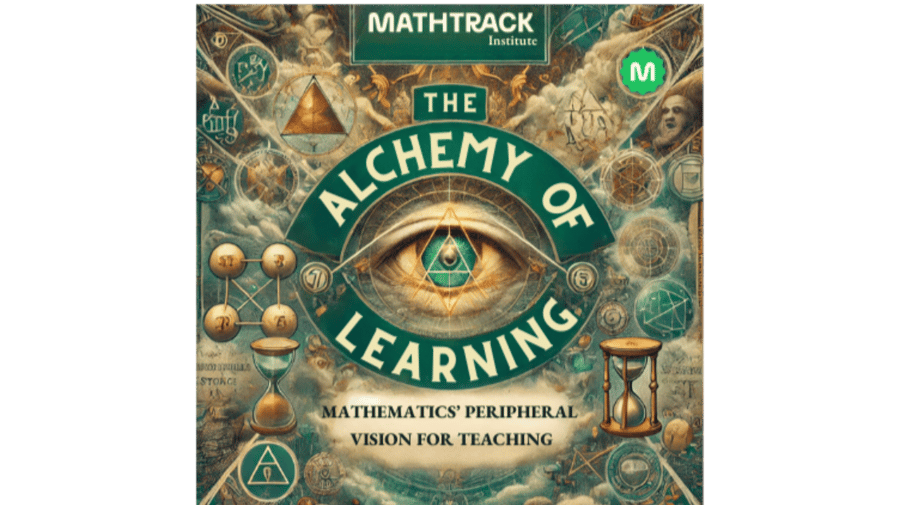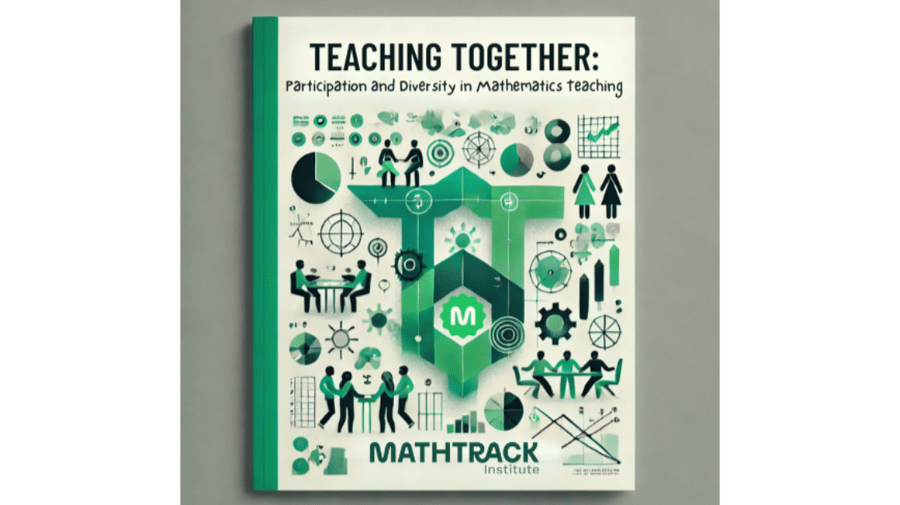The cultural approach to mathematics in the US has always baffled me. I’ve been at plenty of professional and social events and gatherings where people have joked about not being good at mathematics. They would often say things like,
“Oh, I’m not a math person, and I can barely understand or figure out what that means!”
Usually, with a casual laugh, these otherwise incredibly successful and intelligent people reveal that they are, according to them, mathematically illiterate. I’ve never heard in the same setting someone say the following,
“Oh, I can’t read! I’m not a language person, so I can’t understand or figure out what that means!”
It’s okay to be functionally illiterate in mathematics, but it likely isn’t as socially acceptable to be illiterate in other ways. That’s culture, not reality.
Let me elaborate. I am not a math person. That may surprise you because, according to research, only about 200,000 people in the world have the advanced mathematics degrees that I have. In consumable terms, I’m part of a group representing about .003% of the global population. We do not have hats or fancy hoodies that say we are the .003%, but those are the numbers. Perhaps it would help to define what it means to me to be a math person.
EMBODIED MATHEMATICS
Are you born a math person, or do you become one? It’s not always obvious how simple questions like this can have historical and philosophical links to dialogues going back to Plato and Aristotle. These things matter.
Math people today are still often thought of as geniuses - able to do crazy arithmetic in their heads, manage volumes of data intuitively, and perform a myriad of rote formulas and calculations quickly and efficiently. Socially, they are often portrayed as the inept genius who would rather hang out with pigeons than people. The notion that someone is either a math person or not has its roots in the 17th-century Cartesian mind/body dualism and the concept of “innate ideas.” Its founder, Rene Descartes, a philosopher and mathematician famous for the quote, “I think therefore I am,” concluded that because bodily senses could be doubted, the body must be distinct from the mind.
Descartes was a philosopher who was afforded the pleasure of intense and isolated thought exercises devoid of practical application. I was not afforded the same luxury when confronted with a classroom full of middle school students questioning their abilities in mathematics and my ability to help them. Ethically, I could not conclude that my students' struggles were related to how they were born. The practical work of teaching led to explicitly seeking an epistemology and cognitive science theoretical approach that makes “becoming a math person” possible. Turns out that other smart people had wrestled with this, and becoming a mathematics person was redefined as embodied mathematics.
In Embodied mathematics, the discipline of mathematics is defined not only as an abstract set of rules and procedures but also as a dynamic and interactive process that involves the whole body and engages multiple senses. Here, mathematics encompasses numerical calculations, symbolic manipulations, spatial reasoning, geometric relationships, patterns, and problem-solving strategies that can be explored and understood through bodily actions and sensory experiences. Mathematics is a way of making sense of the world around us, and embodied mathematics seeks to bridge the gap between abstract mathematical concepts and concrete, lived experiences.
Instead of being born a math person or not, a math person looks at the world with curiosity and seeks ever more complex ways of defining, modeling, understanding, and exploring that world. Through this frame, math people can be considered explorers and courageous adventurers who are curious about their surroundings and want to understand them. That means that being mathematical is human because these traits are ingrained in the human condition.
USER OF MATHEMATICS VS. TEACHER OF MATHEMATICS
Defining mathematics through embodied mathematics means that our work at MathTrack Institute operates on fundamental assumptions that are likely different from most traditional or transition-to-teaching educator programs of study. We, at minimum, make the following explicit assumptions in our approach toward preparing great math teachers:
- There is no “math gene” that some have and some don’t;
- Teaching math is a skill that can be trained;
- Even if you are considered an accomplished user of mathematics, you still need to study mathematics as a teacher;
- The prerequisites to being a great math teacher are that you choose to do the work, are curious, and are socially adept at interacting with children in positive and supportive ways.
If you have those qualities, you can become an expert mathematics educator.
Many traditional teacher education programs today require a student to major in mathematics to become a mathematics teacher. This top-down approach over the last 4 decades mirrored the curricular evolutions of the early 1900s. The academic major was started and led by Harvard, whose president, Lawrence Lowell, instituted a system of required academic majors. A mathematics major is designed to make users of mathematics, which got its start specifically as mathematics became intertwined with engineering and the sciences (agriculture, too). The study of applied and theoretical mathematics (pure) helps a professional “pack” together tools and concepts, but it doesn’t prepare you to “unpack” 6th-grade concepts for novice 12-year-olds.
To clarify the distinction between “packing” and “unpacking,” a more complex study of mathematics allows you as a practitioner to pack together skills and approaches in increasingly complex and embedded systems to solve problems. If adept at this work, you can solve novel problems efficiently by applying various techniques across various fields of study and theoretical approaches. Andrew Wiles's proof of the famous “Fermat’s last theorem” uses many algebraic geometry and number theory techniques and has many ramifications in these fields of mathematics study. His proof also uses standard constructions of modern algebraic geometry, such as the category of schemes and Iwasawa theory, and other 20th-century techniques that were not invented yet when the famous Fermat made his bold theoretical statement. Andrew Wiles is an example of a profoundly accomplished user of and inventor of mathematics.
The work of teaching is the opposite.
You must unpack mathematics to be consumable by a novice student, not the “packing” of mathematics like Andrew Wiles. Effectively packing concepts makes you less able to teach novices mathematics because you have forgotten the nuance of foundational concepts and empathy for the struggle to learn them. This rigorous study of how to unpack mathematics is missing from the traditional approach to developing mathematics teachers.
This post is not meant to be a mathematics lecture, but humor me briefly to make this unpacking point. The following operation of multiplication on the number set of rational numbers (fractions) is something that you would have been exposed to in 4th and 5th grade:

Many learned then that you could multiply the numerator by the numerator and the denominator by the denominator to get the solution to this task. This is a helpful procedure or heuristic for anyone using mathematics. However, the procedural use of mathematics is only one type of mathematical knowledge important to teachers. With teaching, the applied work is understanding what is difficult for children to learn about the concept, when the concept happens in the scope and sequence of the curriculum, why it takes place there, and what visuals and techniques help novices overcome the difficulties of the concept.
Even more importantly, a teacher needs to have the opportunity to study why it works as a procedure.
MathTrack Institute's programming rigorously studies these parts of mathematics while a teacher is already working in an apprenticeship. You can try this short sequence yourself to see how it feels.
- When considering this task, the first question you should ask is, " What is multiplication?”-Multiplication is often referred to as repeated addition. Would you happen to know if this works for this specific application of multiplication? What does it mean to add one-half, one-fourth times repeatedly? Yikes.-If it isn't clear, it likely wouldn't be clear for an 8-year-old. What other ways of thinking about the operation of multiplication might be useful here?
- The scaling metaphor can represent multiplication. For example, “What is the first number” of the “second number?” With a simple example, 3x4 =12, you could say what exactly is 3 of 4s? Or 4,4,4, which, when put together, gives you 12. This works quite well for fractions, framing it this way rather than just discussing repeated addition. Looking at our example provided, you would say, what is exactly one-half of one-fourth? That answer is one-eighth.
- Checking the procedure: Why does multiplying numerators and denominators work?-The numerators are the parts of the whole counts, so when you multiply, you count the full part of the whole counts of each fraction number.-Denominators are the total unit divisions of each fractional number, so when you multiply, you find the common division number (common denominator) between both fraction numbers so that the parts of the whole count (numerator) can work for both fractions.
It's courageous to admit that this may be hard, but it should also give you respite from past struggles with this concept. Elementary mathematics took humans millennia to create, and now we teach it to kids with less than a decade of the oxygen habit. This makes a case that the mathematics content required to teach mathematics is a rigorous study of applied mathematics, which is why our job-embedded bachelor’s degree for teachers is an applied mathematics degree.
CALL TO ACTION
Does this change how you think about mathematics and being a math person? Are you a storyteller, adventurer, and curious? Then you are a math person (me too). It’s not acceptable to tell your kids or children in your community that it's justifiable to be mathematically illiterate if you would not accept them being unable to read.
Have you ever considered that you might be the best math teacher in your community?
Thankfully, you now have a program that will allow you to pursue that potential and serve the children in your community with the gift of having a thoughtful, caring adult who is a highly skilled mathematics educator consistently. Let’s talk about it! Contact us at MathTrack Institute to learn more.
Subscribe to Our Newsletter


